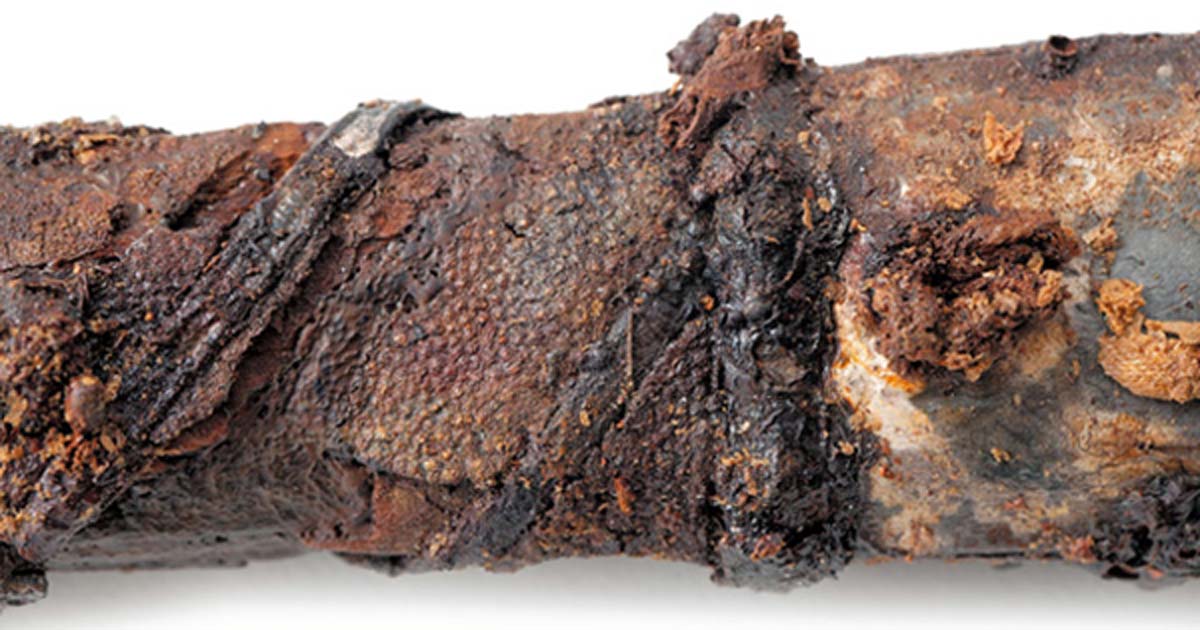Two Rare Swords found in 6th-century Underground Tunnel Tomb in Japan
Two rare and unique swords have been found in a 1,500-year-old underground tunnel tomb in southern Kyushu, Japan. One of them is the longest sword ever found in an ancient Japanese tomb, while the other has a hilt covered in the skin of a stingray – the oldest ray-decorated item found in East Asia.
The Asahi Shimbun reports that the swords were found alongside two sets of skeletal remains, armor, weapons, and horse harnesses in an early 6 th century tunnel tomb in the Shimauchi district of southern Kyushu, which was excavated between 2014 and 2015.
According to Heritage of Japan, underground tunnel tombs were a type of burial practice unique to the Kofun period in Japan’s history (250 to 538 AD). They were either stone-lined chambers in the top of mounds and entered from the top, or they were constructed on the ground under the mound and entered from the side through a tunnel called yokoana chamber. The interiors were usually simple, but the individuals buried inside were often found accompanied with precious treasures and grave goods.

An underground tunnel tomb with its earthen covering removed in Nara Prefecture, Japan (public domain)
Once retrieved from the tomb, the swords were passed to the Gangoji Institute for Research of Cultural Property in Nara, for scientific analysis and conservation work. The Institute revealed that the long sword had a wooden pommel and a precious textile covering the opening of the scabbard known as tate nishiki, a warp-patterned textile. The sword is 142cm long, but would have been about 150cm in its original condition. This is the longest sword ever retrieved from an ancient tomb in Japan.
The sword is believed to have been a gift from the Yamato kingdom, which ruled from the ancient Yamato Province, now modern-day Nara Prefecture, during the period 250 to 710 AD.

A sword and scabbard found in Ebino, Miyazaki Prefecture, believed to have originally been about 150 centimeters long. (Shunsuke Nakamura)
The second sword is about 85 centimeters long and has a silver-decorated pommel and a hilt covered in stingray skin. According to Panam Leathers, Japan was one of the first countries to utilize ray skin for sword hilts. It is an ideal material to use because it is extraordinarily strong and is resistant to being punctured, burned, or torn. It is also waterproof. Samurai warriors would frequently use ray skin on their hilts, as well as their armor. Researchers have said the recently discovered sword is that oldest known example of ray skin on a sword hilt in East Asia.
- The Seven-Branched Sword: The Mystical Ceremonial Sword of Japan
- The Kusanagi: Unseen Legendary Japanese Sword
- The Curse of the Samurai Muramasa Blades

Stingray Leather Wrapping on the hilt of a Japanese Katana sword. The ray skin is the rough texture below the cord wrapping (ullu)
The Asahi Shimbun reports that the swords must have belonged to an elite individual who was highly regarded.
“The swords suggest there was a powerful person in southern Kyushu, who would have directly served someone in the upper rank close to the Yamato king,” said Tatsuya Hashimoto, an associate professor of archaeology at Kagoshima University Museum, who collaborated in the research [via Asahi Shimbun]. He added that the individual would have gone overseas to deal with foreign politics.
Top image: The decoration on the hilt of a sword excavated from an ancient tomb in Ebino, Miyazaki Prefecture, is considered the oldest example of ray skin-craft ever found in East Asia. (Provided by Ebino city government)


















Comments
Interesting article.